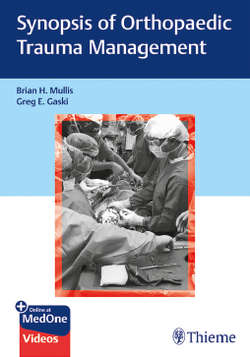Читать книгу Synopsis of Orthopaedic Trauma Management - Brian H. Mullis - Страница 77
На сайте Литреса книга снята с продажи.
II. Bone Physiology
ОглавлениеThe skeletal system serves two primary functions: mechanical support to the body and mineral homeostasis. Bone formation is coupled with bone resorption to allow reorganization of bony architecture along lines of stress (Wolff’s law; Chapter 1, Physiology of Fracture Healing, ▶Fig. 1.5) thus providing maximal structural support, and to allow liberation and sequestration of the body’s calcium stores.
A. The remodeling process depends on the function of three cell types.
1. Osteoblasts—form bone
a. Secrete type I collagen in addition to noncollagenous proteins that compose osteoid. Type I collagen forms a triple helix (two α1 chains and one α2 chain) arranged in parallel array with gaps between the ends of the molecule (hole zones) and in the parallel spaces (pores). Mineralization of bone (inorganic phase composed of calcium hydroxyapatite) begins in the hole zones.
b. Maturation is induced by transcription factors Runx2 and Osterix.
c. Secrete receptor activator of nuclear factor- κβ ligand (RANKL) and macrophage colony-stimulating factor (M-CSF) which stimulate osteoclast differentiation.
2. Osteoclasts—break down bone
a. Monocyte lineage, differentiate after expression of transcription factor PU.1 which leads to expression of M-CSF receptor and RANK.
b. RANKL, a cytokine secreted by osteoblasts and member of the TNFα family, is the most critical and terminal factor necessary for the differentiation of the osteoclast from the monocytic precursor cells.
c. Form ruffled border (increased surface area) and bind to αvβ3 integrin to create a sealed pocket into which carbonic acid (breaks down mineralized bone) and cathepsin K (breaks down organic matrix of bone) are pumped.
d. Balanced by secretion of osteoprotegerin (OPG) by the osteoblast. This is a “decoy receptor” for RANKL. Denosumab (antiresorptive medication) is a synthetic version OPG.
e. Amount of bone resorbed depends on the number of mature osteoclasts, their lifespan, and activity level. While the former is governed by the ratio of RANKL/OPG, the latter two are increased in the presence of inflammatory cytokines (IL-1, IL-6, M-CSF, TNFα).
f. Secrete bone morphogenetic protein (BMP) to stimulate differentiation of osteoblasts.
3. Osteocytes—derived from osteoblasts that become encapsulated in the bone matrix they secreted.
a. Most abundant cells in bone (95%).
b. Cytoplasmic processes extend to adjacent cells through canaliculi and serve as the “neural network” of the bone.
i. Facilitate mechanical signal transduction via the piezoelectric effect, and mediate the remodeling process such that more bone is deposited in areas where greater force is detected (again, Wolff’s law).
B. Imbalance in the remodeling process in favor of bone resporption leads to decrease in bone mineral density and trabecular microarchitecture. This results in weakening of the material and structural properties of bone, and thus increase in the risk of fracture.
